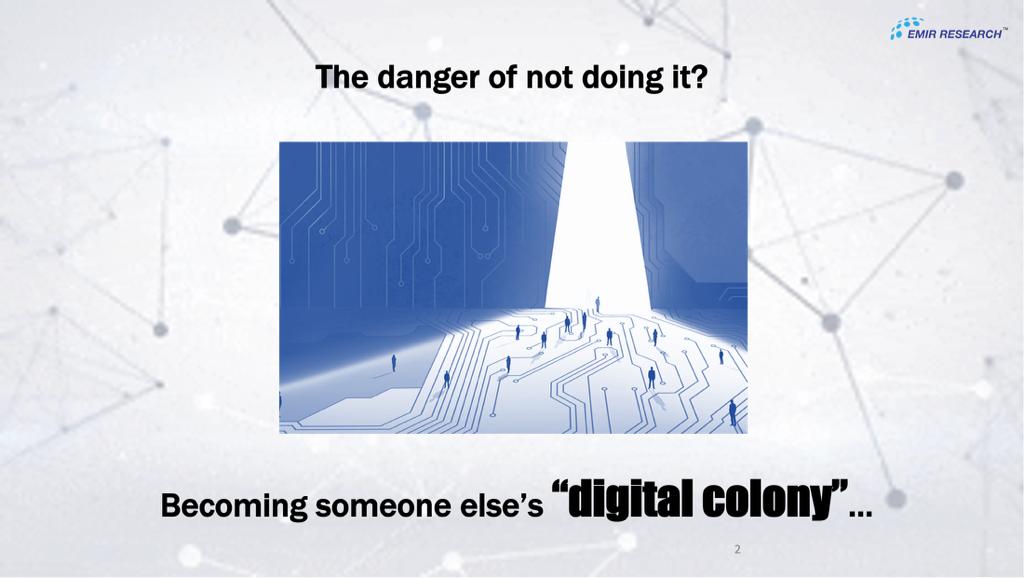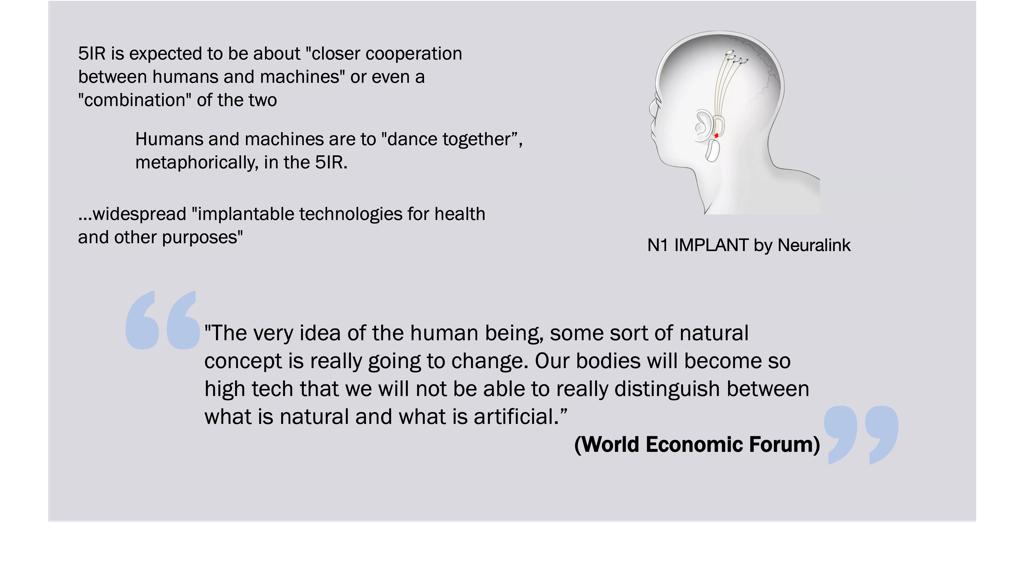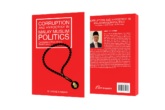
Published in Asia News Today, image by EMIR Research.
Observing history, every subsequent industrial revolution was an advancement in automation of our physical realm. However, in 4IR, for the first time, automation has blurred the lines between the physical, digital, and even biological spheres, partly automating what we are and our societal fabrics and systems.
The various technologies of 4IR that underline the fabrics of society, or as EMIR Research refers to the Smart Technology Layer, are the heart of hyperconnectivity. Technologies such as IoT, Artificial intelligence, Distributed Ledger Technology (such as blockchain), cloud and quantum computing, mobile computing, and the various sensors surround and trace all the contours of the real world.
Data generated by various “real-word” events is (Big Data) is collected in the most unbiased way (via numerous sensors), aggregated, processed, and analysed by information systems and the results are then used by AI-powered robotic systems and devices to manipulate real-world objects without or with minimal human interaction.
Systems operating according to this mechanism already long time handle our energy, transport, medical care, finances, shopping, education, work, leisure, etc. However, a super-smart or hyperconnected Society 5.0 demands the integration of all these stand-alone systems and technologies so that their great processing and analytical power solely benefit society.
Understanding the following points about the Smart Technology Layer is existentially important for Malaysia.
First, the technology layer is already there and its profound influence in our lives is evident whenever we encounter a problem and we seek for a solution within this smart technology layer. For example, if we want to get from point A to point B, we take out our smart phone and call an e-hailing service. If we have a craving, we call the e-hailing service again and order a meal. We do not waste time by driving around and looking for a specific product but order it online from the assorted shopping platforms. In other words, our smartphones are swift to provide the interface to the technology layer. Ask from the technology layer, and you shall receive is increasingly becoming an expectation across the generations, but particularly so for the youngest ones.
We must also note that this technology layer does not interact with us solely on a request-basis. The technology layer is monitoring us and aware of and reactive to our behaviour 24/7/365 while reading the countless sensors surrounding us in our day-to-day experiences.
However, the part that should be of greatest concern to us is that right now, this smart technology layer belongs to individual tech giants (aggregators) who thrive on collecting and monetizing information about everyone. This, unfortunately, is not always done for ethical purposes and to ensure the best interest of the society as whole.
A vision for a people-centric, technology-enabled hyperconnected society has been outlined under Japan’s Society 5.0, which is the inspiration for Malaysia 5.0. This is a society deeply integrated with technology, but it is governed by inclusive and equitable “ecovironmental” (“eco” from the word “economics”, while “vironment” comes from the environment) principles and practices.
Therefore, inclusive and equitable “eco-vironmental” principles and practices are meant to eventually achieve harmony between technological and economic advancements and environment.
To migrate the economy to a digital space, it is logical to start by digitising first its core elements—the economic actors, a medium of exchange, and marketplace. The data about these three core elements are the “fuel” for the smart technology layer.
The smart technology layer is already collecting information about every citizen, just that this information is now kept in a disintegrated manner on servers owned by various tech giant companies, often abroad. The creation of national digital ID (which can be enhanced using blockchain and biometrics) will place control over this personal information back in the hands of government and individuals and is, therefore, a project of paramount importance.
Having control of this system and the data, especially personal information, is a crucial aspect of Malaysia 5.0, which allows everyone to be given equal opportunity to participate in the process of value creation and prosper not only economically but also achieve the highest level of humane self-actualisation by jointly crafting solutions to the various eco-vironmental problems which leaves no one behind, including our natural habitat.
Other emerging technologies such as, for example, 3D printing, IoT, virtual, tactile, and mixed reality allow us to digitise more and more of real-world assets, providing for society’s deeper immersion into digital space. Deep integration of technology into every level of “eco-vironment” is seen as the key driving force of such a transformation.
Therefore, if we fail to properly implement 4IR ourselves as envisioned under Malaysia 5.0, which also requires effective governance, institutions, and legislations, the resulting super-smart and hyperconnected digital ecosystem benefits only those who own the systems. In short, the hyperconnected system, which is intended to benefit the people, would instead benefit governments and corporations – aggregating and concentrating more power, wealth, and control instead of giving this back to society.
Therefore, it is crucially important that the government, in close collaboration with the industry players and academia and other stakeholders, takes greater control of this smart technology layer to ensure that it works for the Rakyat.

What is the danger of not building our own technology layer or procrastinating? Well, we will become someone else’s “digital colony” (or in other words, lose our sovereignty). The longer we procrastinate building our own technology layer the more we give up our sovereignty.
The countries whose own digital infrastructure is weak open wide doors for supranational administration — control and administration performed on their territory over their resources but not in their national interests. The danger of becoming someone else’s raw material appendage is real for any country rich in natural resources but poor in digital infrastructure. As real is the possibility of falling victim to uncontrolled access to its markets.
And becoming someone else’s “digital colony” will happen even faster than we think of it. Nearing neuro quantified era, things will indeed start happening “at the speed of thought”.
In fact, the uncontrolled and exploitative access to our economic space is already a day-to-day reality for Malaysia, and this is just the beginning.
For example, the e-commerce platform space is nearly entirely dominated by Shopee (Singapore, Sea Limited) and Lazada (China, Alibaba Group).
The online travel and lifestyle services segment in Malaysia is led by foreign-owned companies such as Booking.com (Dutch), Traveloka (Indonesia), Agoda (Thailand), while Grab (Singapore) and Foodpanda (Germany) overshadow e-hailing and food delivery. The list can go on for the entire technology-infused creation and delivery of lifestyle products and services expected only to grow in their command of consumers’ lives. Remember the extent of reliance on technology in our modern lives mentioned earlier!
Also note, wealth generation for these few giant companies is wealth extraction for the rest of the world dependent on them. Furthermore, by increasing our complacency and reliance on them, these tech-savvy intruders stall the growth and development of our own technology layer — they are deconstructing our digital sovereignty.
However, the digital colonisation effect does not just end there. All the previous colonisation forces were aimed at making countries lose control over their social and economic policies. The push-button of digital colonisation became the intricate social structures and fabrics, which can now be directly manipulated via the technology layer.
The social structures now can be easily disturbed and redefined, creating a new socio-economic order, or rather in many circumstances chaos, keeping nations from focusing on what they need to do the most—figure out 4IR for themselves and start taking control over the technology layer in their own hands and thus safeguarding their sovereignty.
The “digital colony” is not something that you can easily fight back against. If you are a physical colony, you can still deploy your army and force the enemy out of your territory; however, if you want to fight digital colonisation, you would not even know where to start—an enemy is invisible, ubiquitous, and pervasive.
This is something massive that is nearly impossible to counteract if we miss an opportunity right now and do not start immediately as a sovereign nation gaining greater control of the technology layer from data to infrastructure to applications.
Attempts at erasing the physical boundaries between continents, between individuals and even between the physical and biological spheres already transpire in 4IR and are prophesied to become the central feature of 5IR.
5IR phraseology is only starting to appear among academia and industry practitioners. It is still vague and an inchoate mass of ideas on the subject.

A brief thematic analysis of 5IR mentions reveals that 5IR is expected to be about “closer cooperation between humans and machines” or even a “combination” of the two. Most of these 5IR mentions do not specify how close this “cooperation” or “combination” would be. Humans and machines are to “dance together”, metaphorically, in the 5IR.
However, more details slip through from the World Economic Forum (WEF) content, one of the most vocal ideologues behind the contemporary IRs. Read the following quote carefully, taken word-to-word from one of the WEF videos.
“The very idea of the human being, some sort of natural concept is really going to change. Our bodies will become so high tech that we will not be able to really distinguish between what is natural and what is artificial.”
And this is not just futuristic speculation. There is already a cluster of technologies in the development pipeline to connect the machine and human brain on a very deep level, importantly, not only for therapeutic but also for lifestyle and commercial purposes. All of this is going to be powered by AI, of course.
According to industry observers, at the forefront of the most high-profile investments in these technologies are Facebook, Google, Amazon and Elon Musk’s Neuralink.
These technologies are still nascent but have great potential of becoming that foundational platform for the 5IR or the “neuro quantified” era (Bryan Johnson, founder of Kernel), for example, implantable brain-machine interfaces, nano-sensors, tiny AI, genomics and gene editing, quantum computers, to list just a few.
It is interesting to mention Dr. Stuart Hamerrof, American anesthesiologist and professor at the University of Arizona. He, through his research, underscores that our brain is a real quantum computer.
Furthermore, we also know that the fundamental building blocks of reality are quantum particles. The entangled quantum particles can communicate while being astronomical distances apart. And even more mind-boggling, at the quantum level, energy (or we could also say information) is not being created or destroyed. Now, imagine the possibilities in the ear when the power of quantum is harnessed and human thoughts are quantified—how it can be used but also abused.
In the neuro quantified era the interaction with the technology layer will no longer be “ask and you shall receive” but you shall receive even before you thought of it.
For now, there are already some breakthroughs in establishing the connection in the direction from our brain to machines. Once the opposite direction is established, the widespread “implantable technologies for health and other purposes” may become our day-to-day reality sooner than we might imagine.
However, shouldn’t the very idea of merging artificial intelligence with human intelligence on that deep physical (in the form of implantable technologies) rather than the metaphorical level at least concern us, especially its “other” potential uses? After all, technology is a potentially powerful tool of control and manipulation.
Furthermore, stepping into a domain which, to date, solely belonged to God should at least raise the believers’ eyebrows. Every major religion mandates no change to be made to the creation of God. And the human is one of His most sophisticated and sacred creations.
In the same line, both atheists and religious individuals alike already today question the extent to which AI can go. After all, anything “artificial” has no heart, soul, sympathy, empathy, wisdom or self-sacrifice—elements necessary to form human intelligence.
AI has undoubtedly learned a great deal of how to transform data into information and even knowledge. However, the highest processed form of information for a human being is not knowledge. It is wisdom! As an input, wisdom requires not only known facts and semantics of the physical world but rather the knowledge of unseen universal laws.
Those unseen universal laws and unseen connections seem to be encoded in the human soul (out of AI reach)—an ephemeral and mysterious substance that makes human beings choose to do the right thing even if it is difficult or even self-detrimental to do so. We call this moral-ethical integrity.
AI’s “brain” might be super-efficient at dividing, sorting, and clustering us into groups. However, only the human soul sees the unseen universal ties connecting us despite all the differences.
This innate humane instinct is not intelligence; it is the will of God. Now imagine if this humane instinct is skilfully turned off, augmented or overridden via the most sophisticated machine-brain interface by AI? And if it is done on a massive scale, we have a situation unimaginable even to James Orwell, author of 1984.
Should we then race to use 4IR or even 5IR tools to augment human beings and other biological spheres? Or should we recalibrate our use, draw a clear line, and focus on understanding and restoring all the natural processes within our bodies, societal systems, and natural habitat?
Should we not focus on restoring the importance of every individual on a micro-level (and nation on the macro level) rather than opening an opportunity for the greatest level of control and manipulation of human nature itself?
We will certainly have the power to choose the course of 5IR ourselves as a sovereign nation only if we get 4IR right in the first place.
Failing to do so, while the world shifts into the Fifth Industrial Revolution where hyperconnectivity and the technology layer fully penetrates the human mind, or we refer to as “hyperconnectivity of the Neuro Quantified Era”, Malaysia would forfeit not only its digital sovereignty, but perhaps even its fundamental freedom of its people. We, and our technology layers, would, in a sense, be digitally “colonized”.
Dr Rais is President and CEO of EMIR Research, an independent think tank focused on strategic policy recommendations based on rigorous research.

